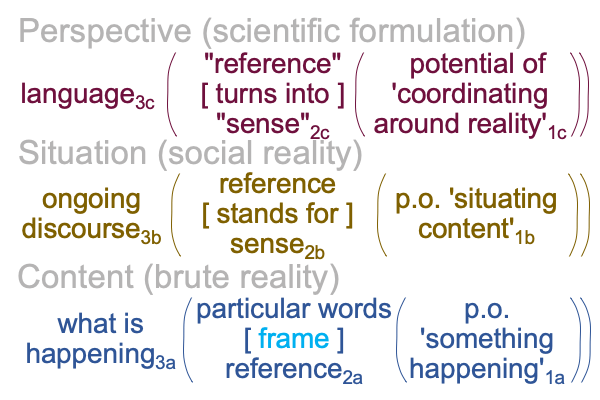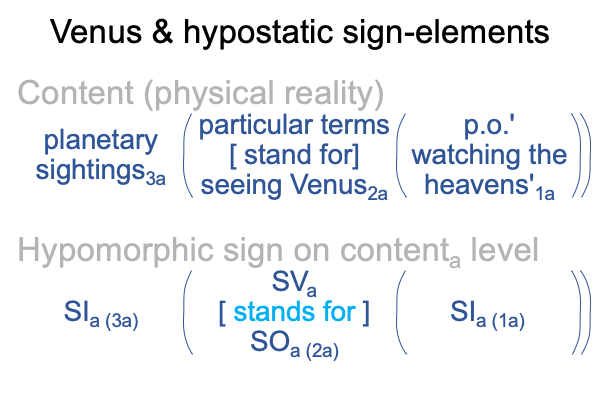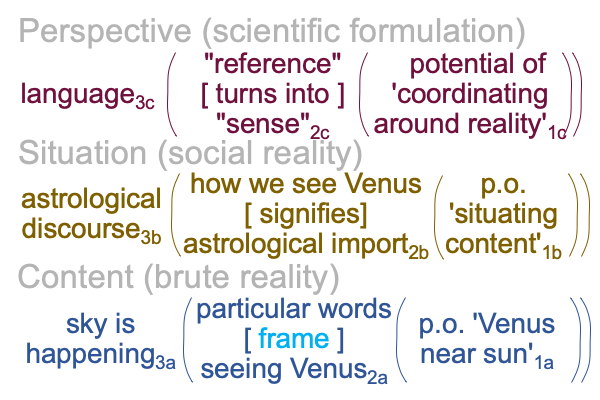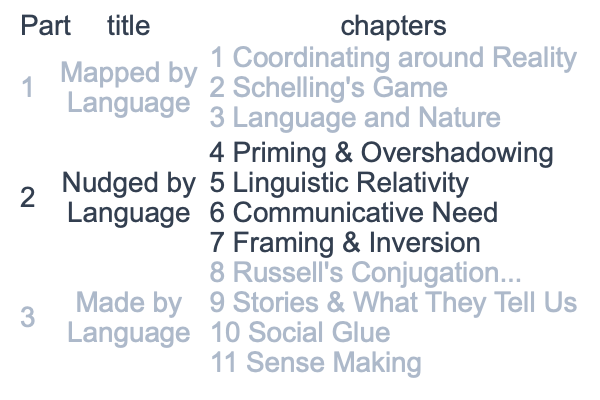0907 How far does this framing business go?
Physical trails lead to social landmarks.

0908 Consider the second planet from the sun.
Venus is closer to the sun than the Earth. Consequently, Venus is always appears close to the sun.
Sometimes, Venus will appear near the sun in the evening. Sometimes, Venus will appear near the sun in the morning. So, Venus is called “the evening star” and “the morning star”.
At times, when Venus is directly behind or in front of the sun, astrologers say that Venus is in “combustion”. When Venus appears to go backwards in its wanderings, Venus is in “regression”. When it goes forward, it will “ingress” different constellations in its path.
0909 Here, the reference is seeing the planet Venus in the sky from the vantage point of the Earth.
We have particular words2a as different ways for seeing Venus as a referent2a, in the normal context of planetary sightings3a arising from the potential of observing the heavens1a.
We also have a flattened sign relation, where particular words2a (SV) stand for the appearance of the planet, Venus2a(SO), in regards to a sign interpretant of planetary sightings3a operating on the potential of watching the heavens1a (SI).
The sign-vehicle (SV), sign-object (SO) and sign-interpretant (SI) all occupy a single-level category-based nested form. It may not be a classic sign-relation. Classic sign-relations cross levels. But, this structure is close enough.
0910 Here is a picture.

A technical term for “close enough” comes from the Greek words, “hypo” (less than) and “morphe” (form).
0911 Here is a diagram for the ongoing interscope for the example of the astrological observation of Venus.

0912 The importance of framing on the content level can be seen as significance on the situation level. Something universal becomes something intelligible, at least as far as astrological discourse3b is concerned.
In a way, the transit from “the morning star2a” to its astrological import2b has the same character as the transit from a particular cloud2a to the importance of going home now2b.
However, the former transit belongs to civilization and commands speech-alone talk and the latter transit belongs to a world of constrained social complexity and takes place using hand talk.
0913 With this, I arrive at the end of Part I and conclude chapter three, concerning language and nature.
Enfield’s book consists in three parts.
Here is an overview.

